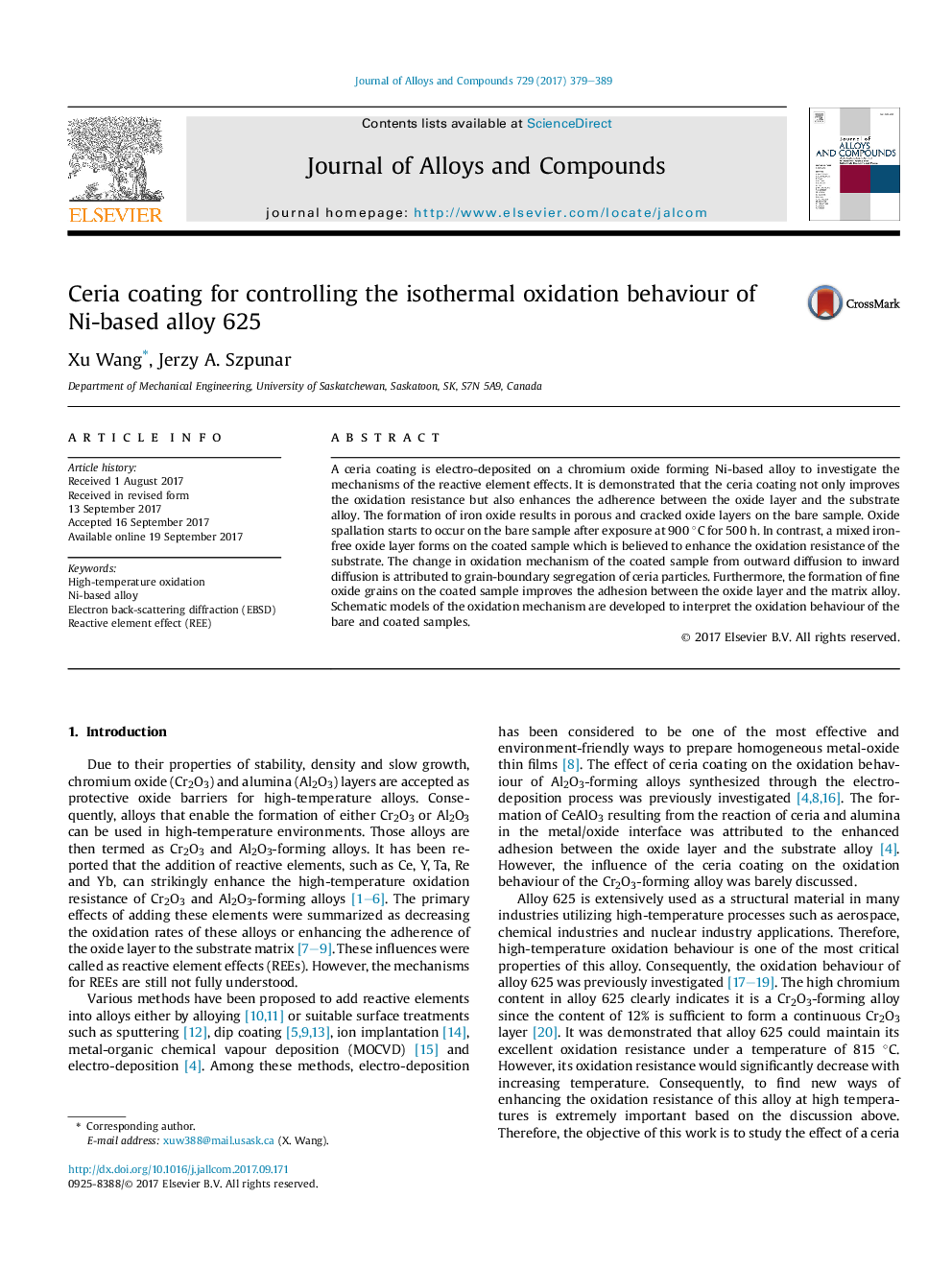| Article ID | Journal | Published Year | Pages | File Type |
|---|---|---|---|---|
| 5458258 | Journal of Alloys and Compounds | 2017 | 11 Pages |
Abstract
A ceria coating is electro-deposited on a chromium oxide forming Ni-based alloy to investigate the mechanisms of the reactive element effects. It is demonstrated that the ceria coating not only improves the oxidation resistance but also enhances the adherence between the oxide layer and the substrate alloy. The formation of iron oxide results in porous and cracked oxide layers on the bare sample. Oxide spallation starts to occur on the bare sample after exposure at 900 °C for 500 h. In contrast, a mixed iron-free oxide layer forms on the coated sample which is believed to enhance the oxidation resistance of the substrate. The change in oxidation mechanism of the coated sample from outward diffusion to inward diffusion is attributed to grain-boundary segregation of ceria particles. Furthermore, the formation of fine oxide grains on the coated sample improves the adhesion between the oxide layer and the matrix alloy. Schematic models of the oxidation mechanism are developed to interpret the oxidation behaviour of the bare and coated samples.
Related Topics
Physical Sciences and Engineering
Materials Science
Metals and Alloys
Authors
Xu Wang, Jerzy A. Szpunar,
